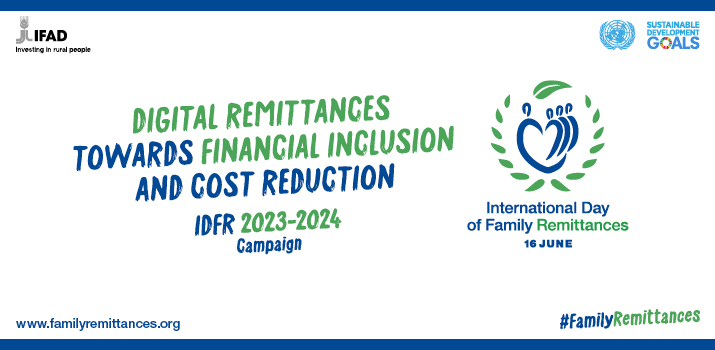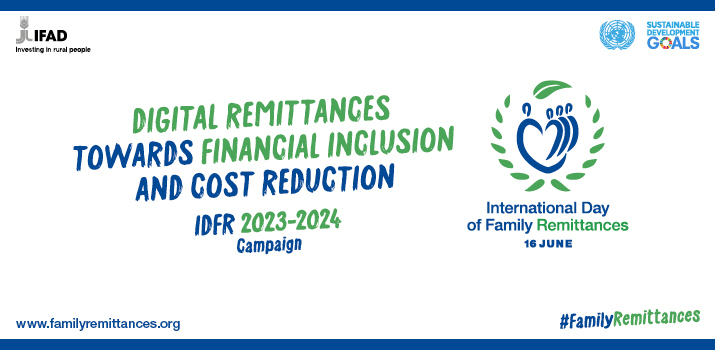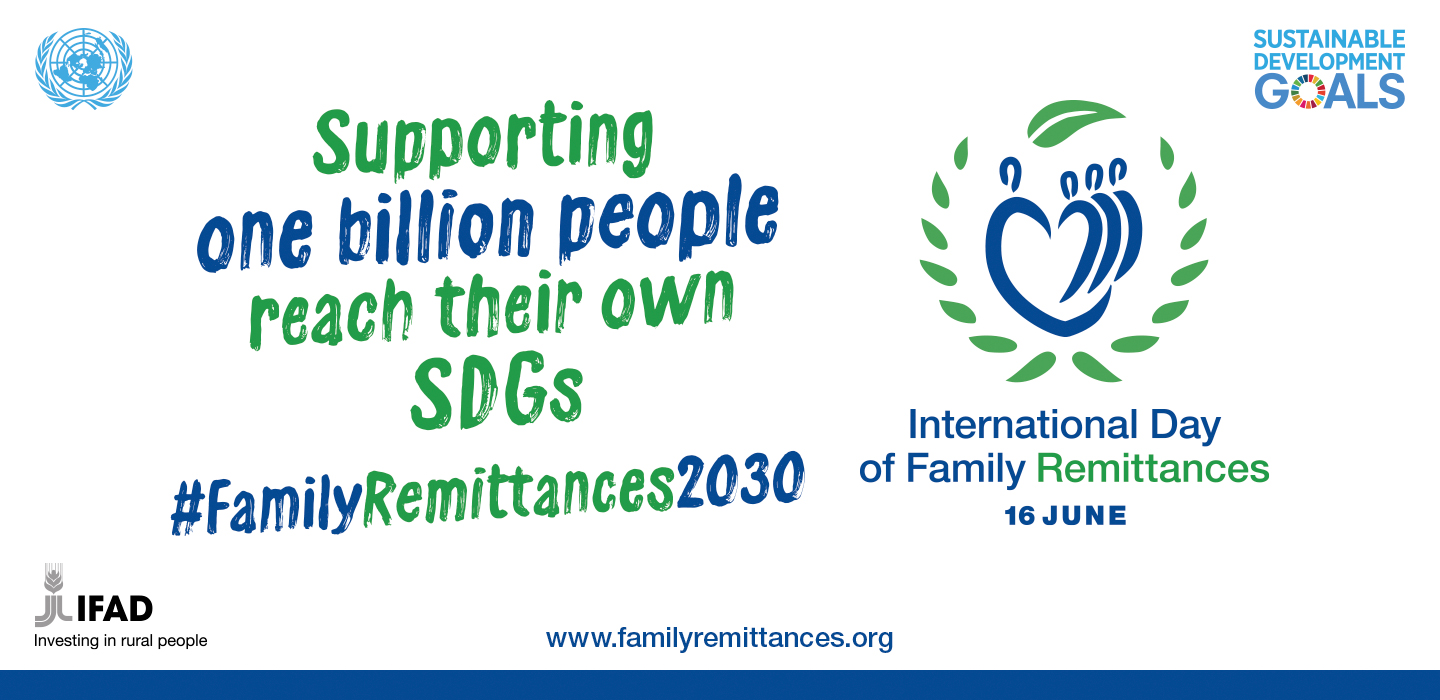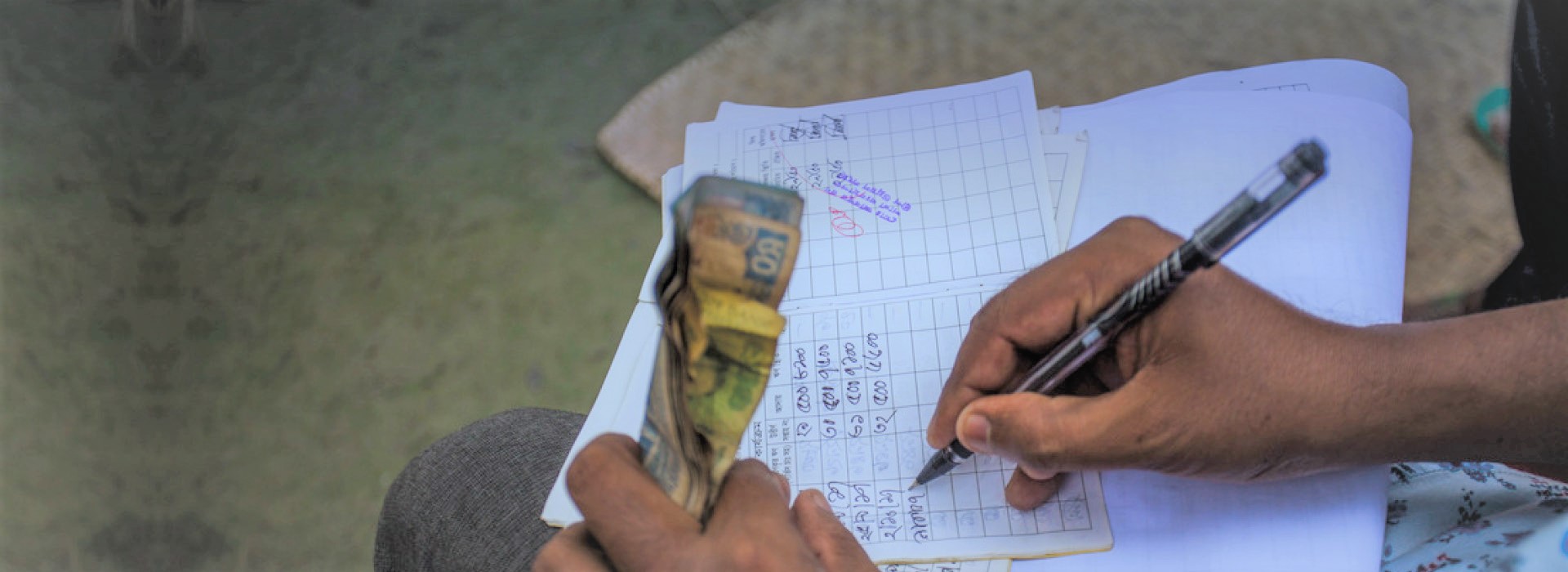International Day of Family Remittances

International Day of Family Remittances (IDFR)
The International Day of Family Remittances (IDFR) is celebrated on 16 June each year. The IDFR recognizes the crucial contribution of over 200 million migrant workers who send money to over 800 million family members in low- and middle-income countries. It highlights the resilience of migrant workers in the face of uncertainty while promoting reduced transfer costs and greater financial inclusion through remittances.
Remittances are a lifeline to the developing world and are used to pay for basic household needs, education and entrepreneurship. While individual remittances may be relatively small (the average remittance is US$200-US$300 a month), collectively, these flows are three times greater than global official development assistance.
Over the past 20 years, remittance flows have increased five-fold. Even during economic downturns, remittances continue to flow as they bind migrants to their families back home, helping them stay afloat. In 2023, remittances to low- and middle-income countries increased by almost 4 per cent to reach US$ 669 billion.
Behavioural shifts among migrants and the diaspora—such as sending savings and using mobile transfers—have further bolstered remittances. The COVID-19 pandemic catalysed the use of formal remittances, with mobile remittances alone increasing by 48 per cent in 2021. Digitalization is less costly than cash transfers and has advanced the financial inclusion of migrants and their families.
Find out more and visit the IDFR webpage.
IDFR Facts and figures
Facts and figures
- Each year, 200 million migrant workers in 40 rich countries send remittances to over 800 million relatives in 125 low- and middle- income countries.
- Remittances directly impact the lives of more than one billion people, either as senders or receivers.
- Global remittances are three times greater than Official Development Assistance.
- In 2023, more than half of the US$669 billion remittances sent to low- and middle-income countries went to rural areas.
- Remittances make up an average of 60 per cent of household income.
Related news
Related news
Migrant Contributions for Development Call for Proposals 2024 for Uzbekistan
Through its Financing Facility for Remittances, IFAD is pleased to launch the Migrant Contributions for Development Call for Proposals 2024 for Uzbekistan.
Migrant Contributions for Development Call for Proposals 2024 for Tajikistan
Leveraging remittances to foster financial and digital inclusion, and support the sustainable reintegration of migrant returnees for local economic development in rural areas.
Migrant Contributions for Development Call for Proposals 2024 for the Kyrgyz Republic
IFAD’s multi-donor Financing Facility for Remittances (FFR) is pleased to launch the Migrant Contributions for Development Call for Proposals 2024 for the Kyrgyz Republic.
Related stories
Related stories
13 reasons why remittances are important
Remittances continue to matter more than ever, particularly in rural areas where they count the most and provide further opportunities towards rural transformation. Here are 13 reasons why.
11 reasons why remittances are important
Every year, on 16 June, the International Day of Family Remittances (IDFR) is observed to raise further awareness on the abnegation and sacrifice of migrant workers, who support their families and communities of origin through the money they send back home, particularly in these times of crisis.
Helping remittances reach rural areas in Moldova
For some time now, it has been difficult to find well-paid work in Moldova. Most of the good jobs available are concentrated in the cities, resulting in significant migration out of the country’s rural areas.
Related events
Asset Publisher
The GFRID Summit 2023
IFAD and the UN Office of the Special Adviser for Africa are hosting the Global Forum on Remittances, Investment and Development (GFRID) Summit 2023.
GCM Talks: Remittances, Diaspora and the Sustainable Development Goals
This webinar will launch the International Day of Family Remittances (IDFR) campaign and will set the stage for the upcoming Global Forum on Remittances, Investment and Development (GFRID) Summit 2023.
International Day of Family Remittances – Observance events 2022
The International Day of Family Remittances helps raise awareness of migrants’ crucial contribution to the development of their communities of origin.
eGFRID - Remittances and investment: how migrants finance sustainable development
The next eGFRID webinar, jointly hosted by IFAD and the European Commission (EC), will focus on the topic of “Remittances and investment: How migrants finance sustainable development.”
Related publications
Related publications
GFRID Summit 2023: Outcomes Report
This report outlines key findings and actionable outcomes for both remittances and diaspora-impact investments.
RemitSCOPE Africa Report 2023
This report uses the latest data to give an overview of remittances into and throughout Africa, looking at the drivers, trends, impact and potential.
RemitSCOPE: Ghana Country Diagnostic
This Ghana country diagnostic was prepared in accordance with the PRIME Africa goals.
RemitSCOPE: Kenya Country Diagnostic
This diagnostic provides an assessment of Kenya’s remittance market, especially in light of the COVID-19 pandemic, using a market-oriented approach.
Related documents
- Trello Board
- IDFR flash reports for 2022:
Related videos
Related videos




Contact information
Asset Publisher




Frédéric Ponsot
Senior Technical Specialist on Remittances, Diaspora and Inclusive Finance

Leonard Makuvaza
Remittances and Inclusive Digital Finance Officer (South Africa, The Gambia)



Related pages
Related pages
The International Day of Family Remittances (IDFR) Contacts
Contact us
For questions, please contact [email protected]






